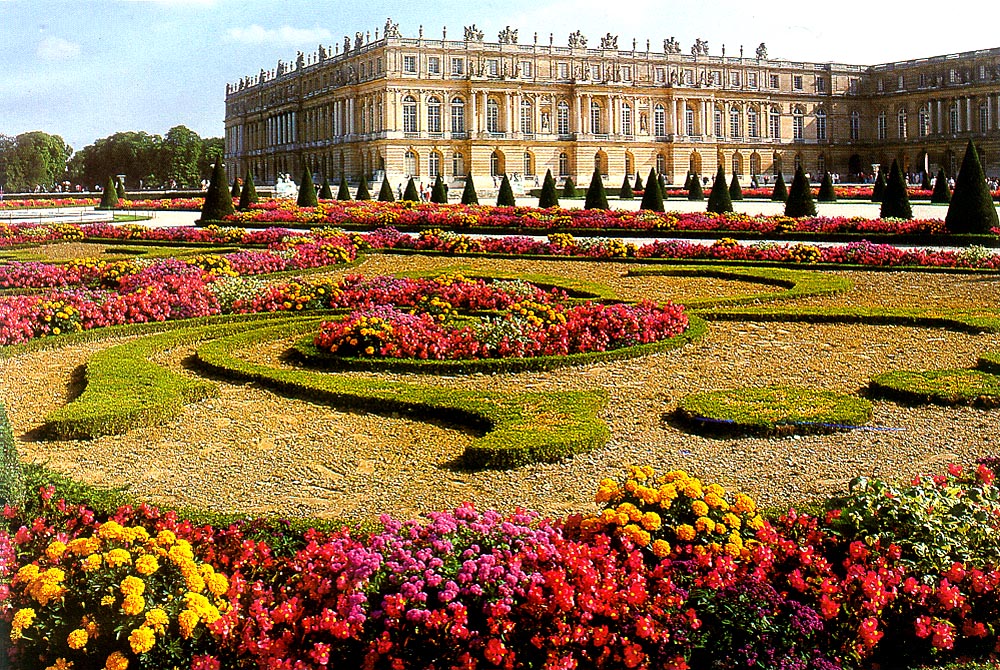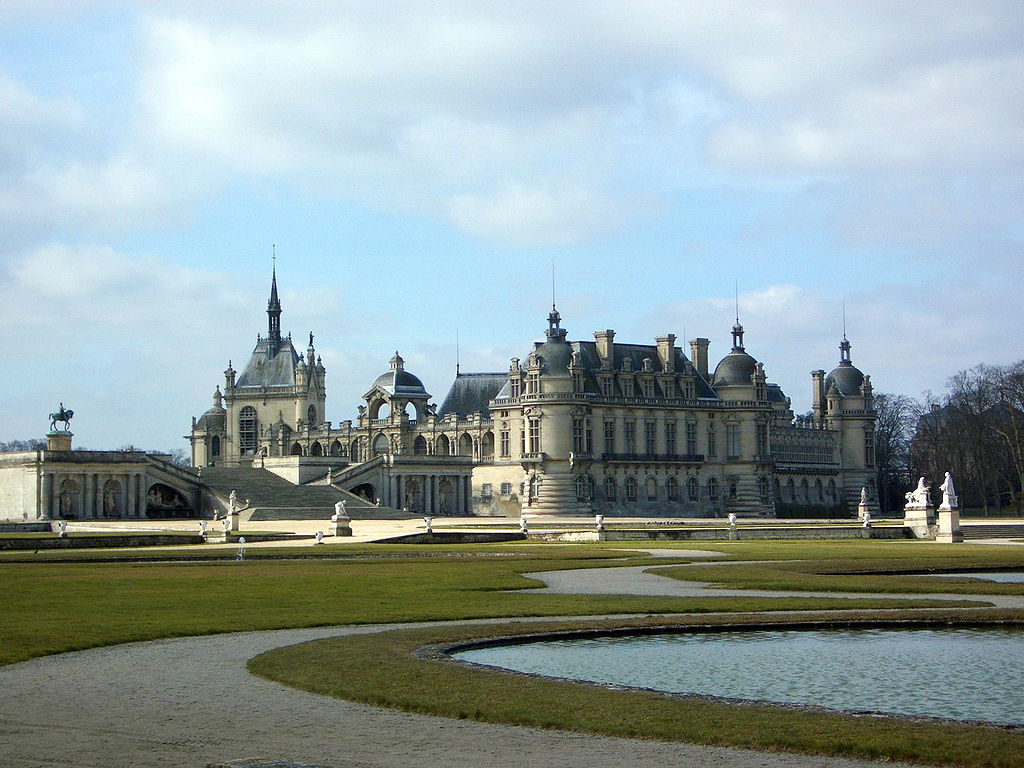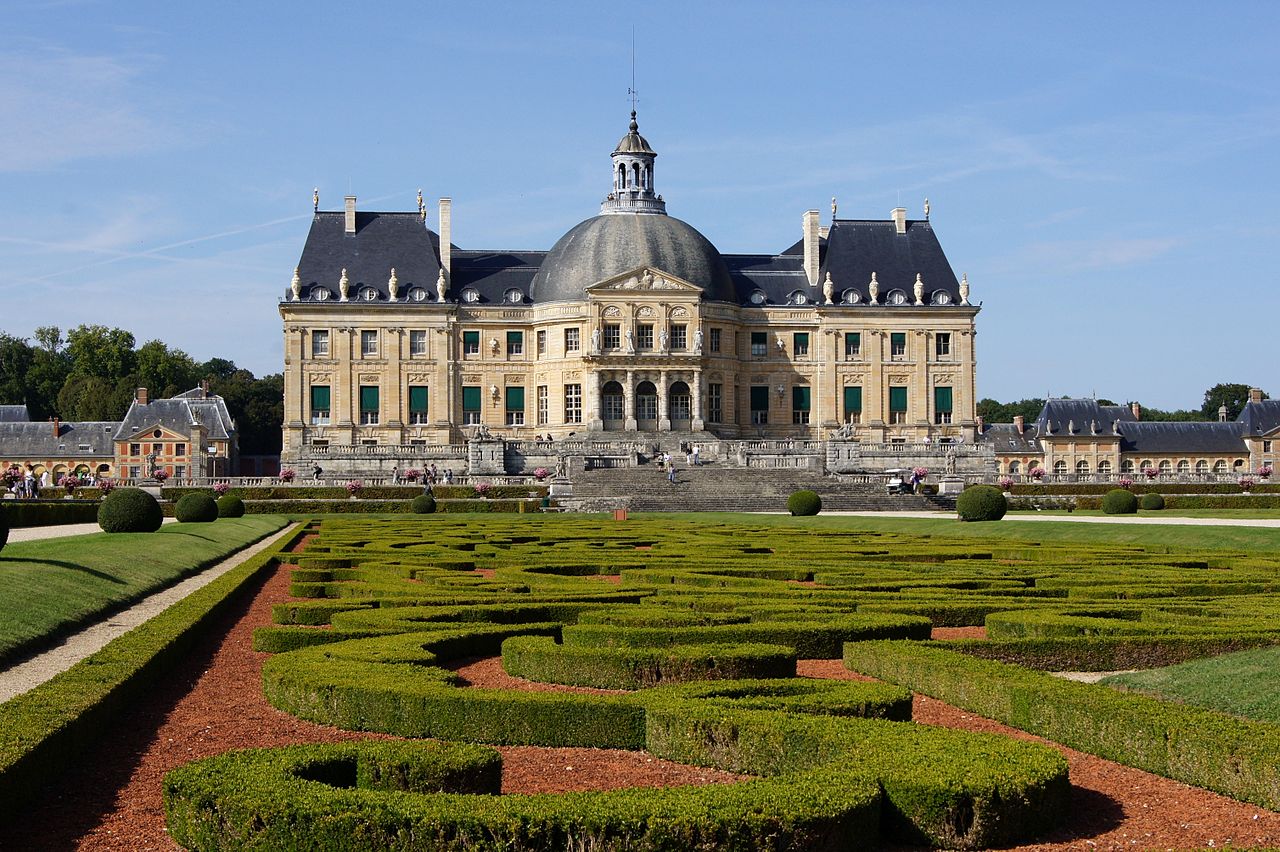French formal garden الحدائق الفرنسية
French formal garden
From Wikipedia, the free encyclopedia
The French formal garden, also called the jardin à la française (literally, "garden in the French manner" in French), is a style of garden based on symmetry and the principle of imposing order on nature. Its epitome is generally considered to be the Gardens of Versailles designed during the 17th century by the landscape architect André Le Nôtre for Louis XIV and widely copied by other European courts.[1]







Renaissance influence
Main article: Gardenf
The Garden à la française evolved from the French Renaissance garden, a style which was inspired by the Italian Renaissance garden at the beginning of the 16th century. The Italian Renaissance garden, typified by the Boboli Gardens in Florence and the Villa Medici in Fiesole, was characterized by planting beds, or parterres, created in geometric shapes, and laid out symmetrical patterns; the use of fountains and cascades to animate the garden; stairways and ramps to unite different levels of the garden; grottos, labyrinths, and statuary on mythological themes. The gardens were designed to represent harmony and order, the ideals of the Renaissance, and to recall the virtues of Ancient Rome.
Following his campaign in Italy in 1495, where he saw the gardens and castles of Naples, King Charles VIII brought Italian craftsmen and garden designers, such as Pacello da Mercogliano, from Naples and ordered the construction of Italian-style gardens at his residence at the Château d'Amboise and at château Gaillard another private's king résidence in Amboise. His successor Henry II, who had also traveled to Italy and had met Leonardo da Vinci, created an Italian nearby at the Château de Blois.[2] Beginning in 1528, King Francis I of France created new gardens at the Château de Fontainebleau, which featured fountains, parterres, a forest of pine trees brought from Provence and the first artificial grotto in France.[3] The Château de Chenonceau had two gardens in the new style, one created for Diane de Poitiers in 1551, and a second for Catherine de' Medici in 1560.[4]
In 1536 the architect Philibert de l'Orme, upon his return from Rome, created the gardens of the Château d'Anet following the Italian rules of proportion. The carefully prepared harmony of Anet, with its parterres and surfaces of water integrated with sections of greenery, became one of the earliest and most influential examples of the classic French garden.[5]
While the gardens of the French Renaissance were much different in their spirit and appearance than those of the Middle Ages, they were still not integrated with the architecture of the châteaux, and were usually enclosed by walls. The different parts of the gardens were not harmoniously joined together, and they were often placed on difficult sites chosen for terrain easy to defend, rather than for beauty. All this was to change in the middle of the 17th century with the development of the first real Garden à la française.
French formal garden الحدائق الفرنسية
![French formal garden الحدائق الفرنسية]() بواسطة mohamed moharrm
on
نوفمبر 24, 2016
Rating:
بواسطة mohamed moharrm
on
نوفمبر 24, 2016
Rating:


ليست هناك تعليقات